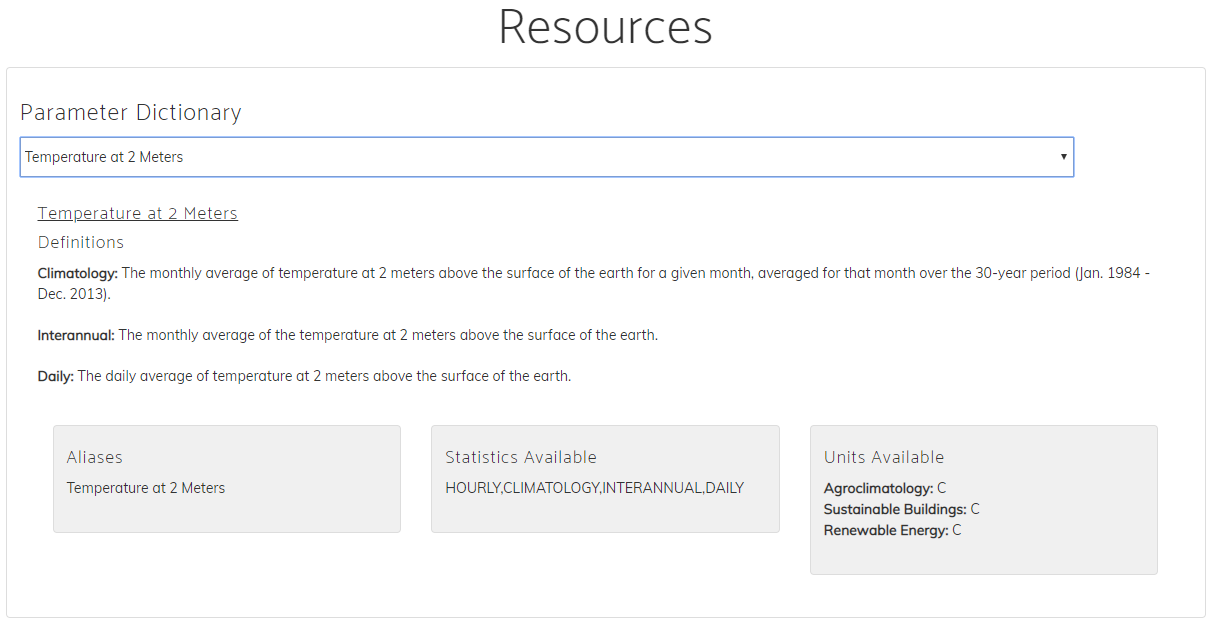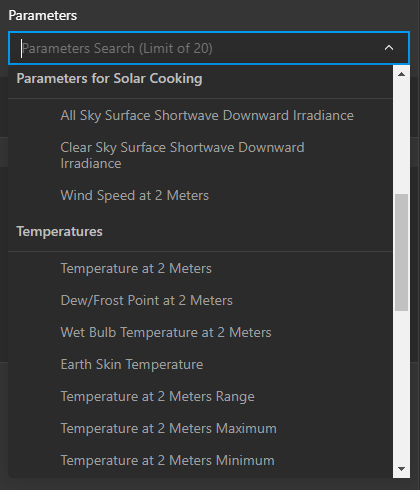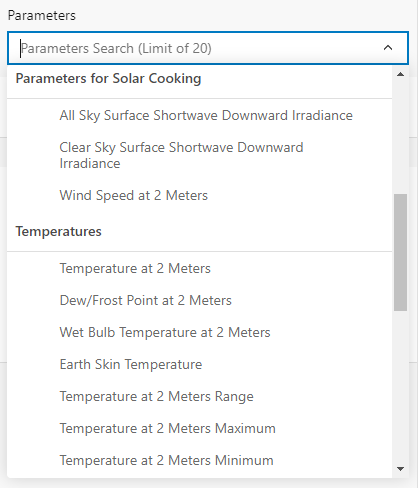Parameters¶
The parameters provided by POWER are based upon solar radiation derived from satellite observations and meteorological data from assimilation models. The base solar and meteorological parameters are available as hourly, daily, monthly, annual, and climatological time series formats for user selected grids. The base data is available in its original source spatial resolution. This section explains the structure, naming convention, and availability of the specific solar and meteorological parameters that can be accessed through the POWER Data Services. This is intended to be a supplement to POWER Data Access Viewer (DAV) User Guide and the API documentation.
Dictionary¶
To access the full list of the POWER data parameters available please use the Parameter Dictionary located on a stand alone website or within the POWER Data Access Viewer (DAV) in the parameters pane.
| Parameter Not Selected | Parameter Selected |
|---|---|
 |  |
Groupings¶
The parameter groups are dependent on the user community and temporal level selected when using the Data Access Viewer (DAV). This enables parameter recommendations to be tailored to each of the communities: Renewable Energy (RE), Sustainable Infrastructure (formerly Sustainable Buildings) (SB), and Agroclimatology (AG). While within each community, parameters are filtered by the temporal availability (Hourly, Daily, Monthly, Annual, or Climatological) allowing users to only select data that is available.
For each user community and temporal level, the parameters are organized in a hierarchical structure under their respective folder names.
Parameters Limit
There is currently a limit of 20 parameters that can be downloaded at a time using the Data Access Viewer (DAV).
| DAV Grouping (Dark) | DAV Grouping (Light) |
|---|---|
 |  |
Availability¶
When using the API, all parameters have associated availability with a POWER Community and Temporal level. If you are using Data from the POWER Data Archive, you will have access to the full data catalog with each parameter's original units.
API Parameters
To determine availability of a parameter for a specific community and Temporal level please refer to the POWER Parameter Dictionary.
Naming Convention¶
POWER uses a standard naming convention across all the services in the POWER Data Services; this enables users to access data from any of the power services using the same naming convention.
- Names are typically less than 20 characters
- Abbreviated words are separated by a
_. - Grouped parameters lead with the common name (e.g. T2M: T2M_MAX, T2M_MIN, T2M_RANGE)